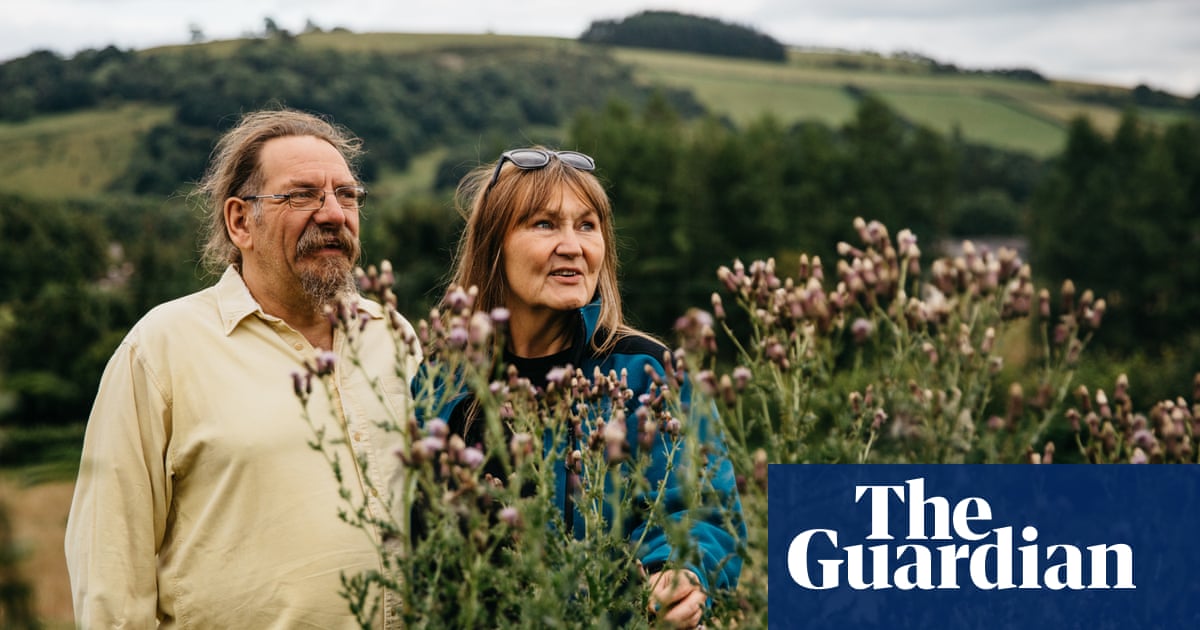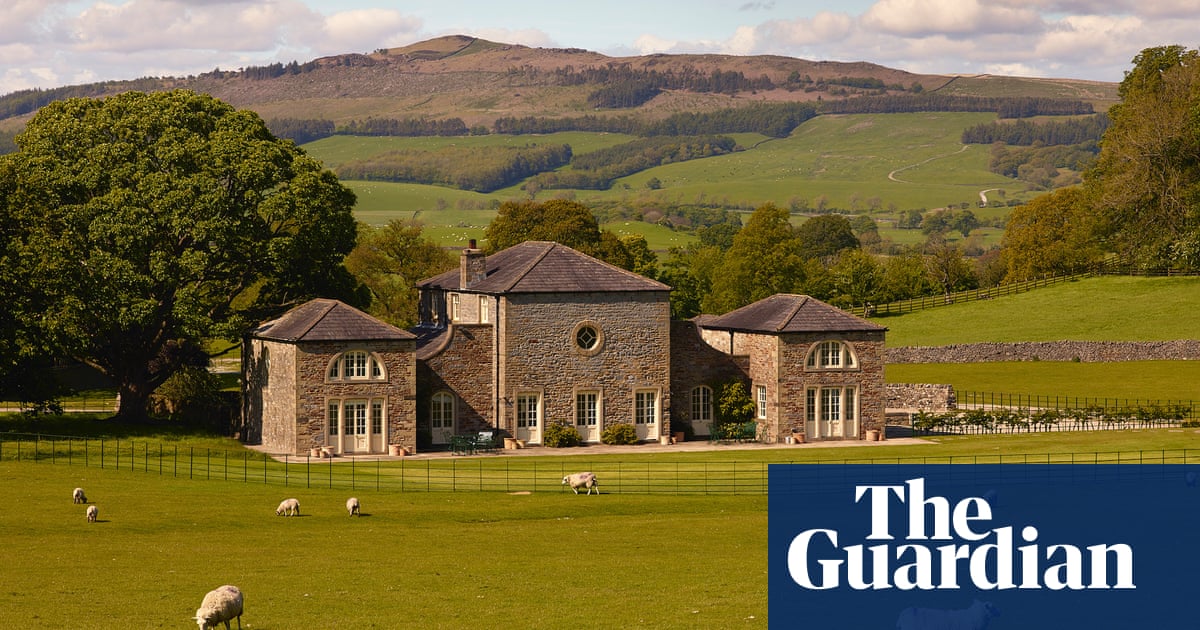
When Pentwyn, a 65-hectare (164-acre) sheep farm, was bought by Radnorshire Wildlife Trust, the charity faced the familiar charge that it would be sacrificing good food-producing land for rewilding.
But the trust deftly disabled such criticism by setting up a 2-hectare (5-acre) market garden that will provide a livelihood for a local couple and produce more food for local people than the conventional farm did.
Like many people, I find rewilding an inspiring idea. But, alongside its critics, I’m also troubled by some potential implications – particularly the idea that some farmland will have to be cultivated even more intensively to produce food because other fields are entirely turned over to nature. Is it really realistic? Are we getting carried away with a beautiful idea?
The pioneering English rewilding project at Knepp in West Sussex may produce high-quality free-range meat but George Monbiot – a big fan of rewilding – has pointed out that its meat production per hectare is so small that, if rolled out across 10% of British farmland, it would provide just three meat meals a person a year.
Meanwhile, Britain’s fruit and veg growing is shrinking under a number of blows such as Brexit and the (not unconnected) high cost of energy. It is down from providing 82.7% of fruit and veg in 1988 to 55.6% of vegetables and just 16.3% of fruit in 2020.
Small-scale, low-impact market gardening is a Cinderella industry that lacks significant government support and yet it is remarkably productive: as Monbiot reveals in his book Regenesis, the market gardener Iain Tolhurst produces 120 tonnes of fruit and veg each year on just 7 hectares. In Norfolk, the 0.4-hectare (1 acre) community market garden Eve’s Hill Veg Co has a turnover of £96,000, supplies vegetables to eight shops and restaurants and about 50 local families, employs three paid trainees and helped put more than 40 people through their Level 1 horticultural course. And their vegetables taste delicious: I know, because my family buys their weekly veg bag.
Of course there has always been small-scale farming, but a new generation around the world is breathing new life into the idea. In Canada, the “rock-star farmer” Jean-Martin Fortier heads a whole movement of small-scale farmers – his guide to market gardening has sold more than 200,000 copies. In Sweden, the regenerative small farmer Richard Perkins runs popular training courses on how to make small farms work.
Can combining rewilding and market gardening create more wildlife and more healthy food? Knepp has just established a market garden to serve its farm shop which opened this summer and many Wildlife Trusts are acquiring small farms to rewild on the Knepp model.
At Pentwyn in Wales they are leading the way. James Hitchcock, the chief executive of Radnorshire Wildlife Trust, says: “The kickback against rewilding is, ‘It’s all very well and good you middle-class lot saying that low-input, high-value beef is the future. How do you feed people who haven’t got that income or time to cook?’ If we’re worried about food security and access to good quality, nutritious food, what we need is short supply chain fresh fruit and veg actually.”
The farm was bought with a £1.5m loan in 2021 and will mostly follow a now-familiar recipe for British rewilding projects: use a small number of free-roaming animals to restart natural processes, creating a mosaic of wildlife-friendly habitats including woodland, species-rich pasture and free-flowing streams as well as Ffridd, the Welsh fringe habitat between traditional farmland and open moorland.
Nature rapidly roars back into any land managed less intensively, and Pentwyn’s fields are already full of meadow brown and gatekeeper butterflies, with bird’s foot trefoil and other wildflowers in bloom.
But the big change this summer was the arrival of the trust’s new tenants, Lisa Sture and her husband, John Hexall, who are establishing the market garden across three fields.
“Obviously it’s got lots of challenges,” says Sture, who had previously worked on smallholdings, and also did some training with Perkins. “The upland Welsh soil is not particularly naturally fertile. It’s more acidic than vegetables like. We’re higher up [270 metres above sea level] so we’ve got the wind, cooler conditions and shorter seasons. However, it’s an experiment. Let’s see what we can do. Anyone who feels the need to grow should just grow.”
Sture’s plan is for one polytunnel, 30 “no dig” vegetable beds, and egg-laying chickens with a mobile “tractor” so they move around every few days improving the land. Compost will be added from a local food-waste composting plant. One field will contain a forest orchard, including apples, pears and hardy kiwis, as well as hawthorn, rowan and Welsh juniper for making herbal health syrups. Another will host camping and a roundhouse for educational visits and running courses. As a financial director, Hexall has the skills to make the sums add up, and the partnership with the trust means a supply of eager volunteers and young people on work experience schemes.
They will sell, they hope, locally. “When we looked on the map and first saw it, we thought, ‘It’s the middle of nowhere, we won’t be able to grow and sell anything there’.” But they’ve founda thriving community. “It’s a really vibrant area.”
Sture will sell produce at the farm gate, via veg boxes to locals, and at the surprising number of farmers markets in Welsh border towns. She’s also already making connections with restaurants in the area; the famous food town of Ludlow is 50 minutes away, as is Hay-on-Wye.
A new model of upland farming at Pentwyn is beginning; if viable vegetable production can be married to a rewilded land of birdsong and butterflies, it could prove influential across Britain and beyond. At the very least, it confounds the standard critique of rewilding. “We wanted to say we’ve provided an opportunity for someone to access the land,” says Hitchcock, “and create something that should genuinely benefit local people.”
USEFUL INFORMATION:
How much does this cost? The basic startup cost for a low-impact market garden is estimated at £50,000. Some Welsh government support is available for market gardens and farms of 2 hectares and above. (An estimated 70% of conventional Welsh farms do not make a profit and are propped up by government subsidies. The average annual profit for a British farm’s agricultural production is just £5,600.)
Can other places do it too? Yes! Low-impact market gardening takes up very little land. And it’s not just fertile lowlands – upland farmers such as Lynbreck Croft in the Cairngorms show we can grow good veg on upland soils, although there may be a ceiling on the number of growers that can diversify with income streams from camping and courses. As rewilding projects spring up around the world, there will certainly be opportunities to explore this idea more closely.
HELPFUL READING:
Regenesis by George Monbiot (Penguin, £10.99)
Our Wild Farming Life by Lynn Cassells and Sandra Baer (Chelsea Green, £18.99)
The Market Gardener by Jean-Martin Fortier (New Society, £19.99)
The Book of Wilding by Isabella Tree (Bloomsbury, £35)
A Small Farm Future by Chris Smaje (Chelsea Green, £18.99)
To support the Guardian and the Observer buy copies at guardianbookshop.com. Delivery charges may apply.












